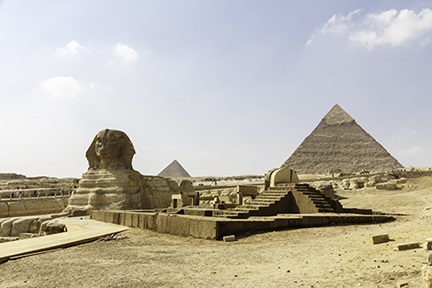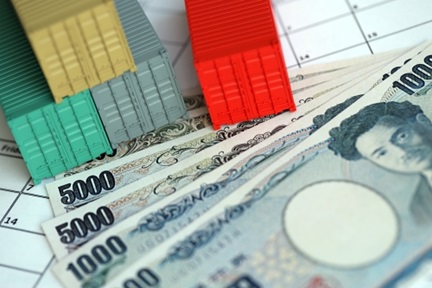Universal Basic Income as an instrument to end extreme poverty in Africa
Theory and practice of free money
By Franklin Obeng-Odoom
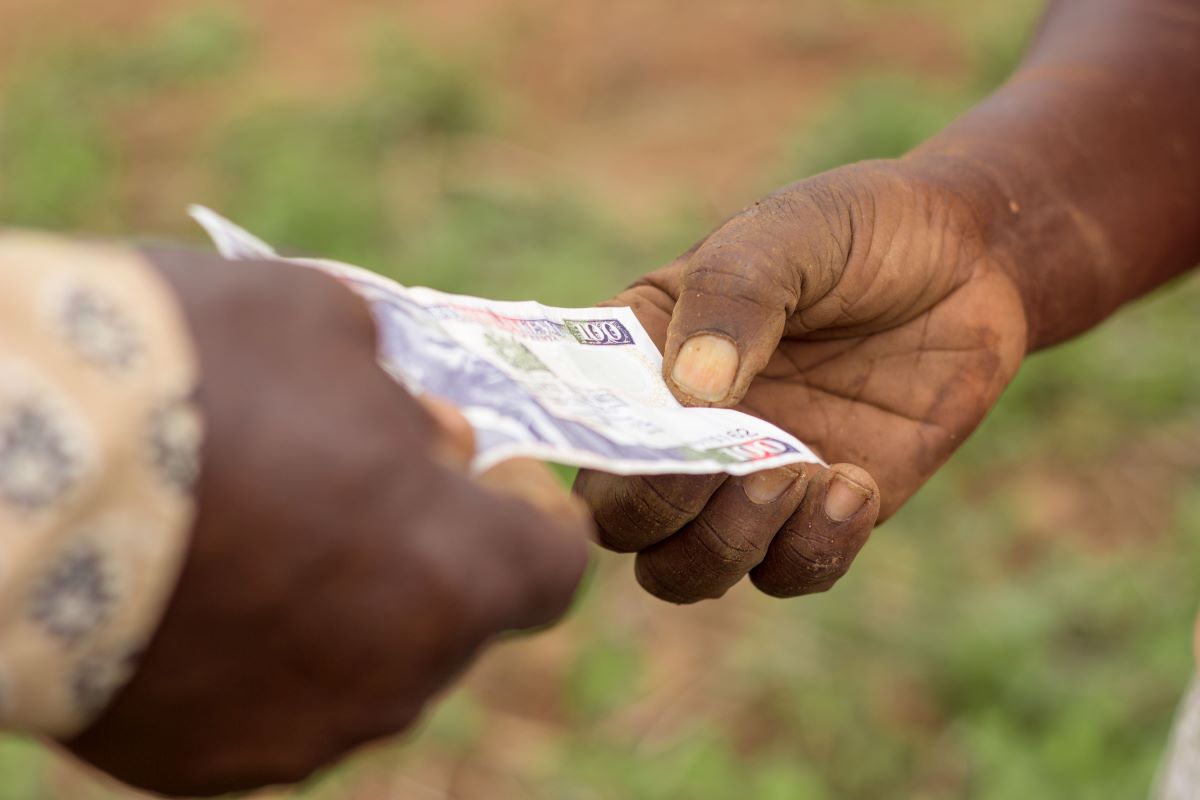
The concept of Universal Basic Income (UBI) or unconditional cash transfer has caught the attention of development economists in recent years. UBI is a cash transfer scheme under which every citizen receives a minimum monthly income irrespective of their income, employment, class, caste, or race. The goal of this ‘free money’ is to remove the need for means testing (and by extension bureaucratic cost) and inefficiencies that come with implementing welfare schemes. UBI is premised on the idea that setting a floor on poverty is the most effective way to eradicate impoverishment. But UBI raises many questions. Is free money a dependable cheque for development? What is free money worth in care terms? What are the unintended consequences of free money? Drawing on recent evidence in Kenya, I argue that the case for free money is fundamentally misaligned with, and diverts attention from, the true drivers of ‘progress and poverty’.
Keynes, Wray, and Friedman
A new form of Keynesianism heralds economics. It is typified, according to The Economist (2020), by unprecedented amounts of state borrowing, by the printing of large sums of money, by direct capital allocation, by the pursuit of low inflation, and by the sharing of free money. Of these, UBI and unconditional cash transfers - the new face of free money in Africa – provoke the most controversy.
So, the case for free money must be clarified and further analysed. In Keynesian economics, the case for free money is made around the so-called multiplier-effect. That logic says that because the poor have a higher ‘propensity to consume’ and the rich, a higher ‘propensity to save’, it is more effective to give free money to the poor. Since the poor have a stronger tendency to spend what they receive, the returns (of this Keynesianism) are not just good for the poor, but also for the entire economy. After all, it is the cycle of spending and consuming that keeps an economy going, a treatise discussed extensively in Chapter 10 of The General Theory of Employment, Interest, and Money. There, Keynes notes that when incomes flow into a community, the resulting increases in consumption are not necessarily proportional. Rather, the increases can be multiples of the income stream because of what he called the ‘investment multiplier. It tells us that, when there is an increment of aggregate investment, income will increase by an amount which is k times the increment of investment’ (Keynes, 1953/1964, p. 115, italics in original).
Modern Monetary Theory (MMT) – developed, among others, by L.R. Wray - extends the Keynesian work substantially. MMT emerged in the circles of Post Keynesian Thought in the 1990s (Wray, 2022, p. 216-217). ‘Helicopter money’ is not what MMT is all about , however (Wray, 2022, p. 228). Simply printing more and more money is not MMT. Still, MMT continues to rely on the notion of some free money, the multiplier and macroeconomic analyses more broadly.
Economists debate whether free money is orthodox or heterodox. Economies seem to be shifting from the free markets of Milton Friedman to the free money of J.M.Keynes,’ says The Economist (2020). But for academic mainstream economists (e.g., Banerjee et al., 2019), giving free money to people also means unleashing the motors and impulses of free markets. People are, in Friedmans’ terms, Free to Choose (Friedman and Friedman, 1979/1980). The era of government-determined nutrition, education, health, and housing is over: free money would, accordingly, enhance freedom of choice.
In 1948, Arthur Smithies wrote in the American Economic Review that the idea of the multiplier, once considered heterodox, even treasonous, ‘has become rather mainstream, accepted by all’ (Smithies, 1948). Today, governments and civil society are near unanimous in backing the idea of universal cash transfers. The holy grail of this story is encapsulated in the book, Just Give Money to the Poor (Hanlon et al., 2010) or by the NGO, GiveDirectly. How does this work in urban Africa? What is the record of free money in slums? Why is a new approach needed?
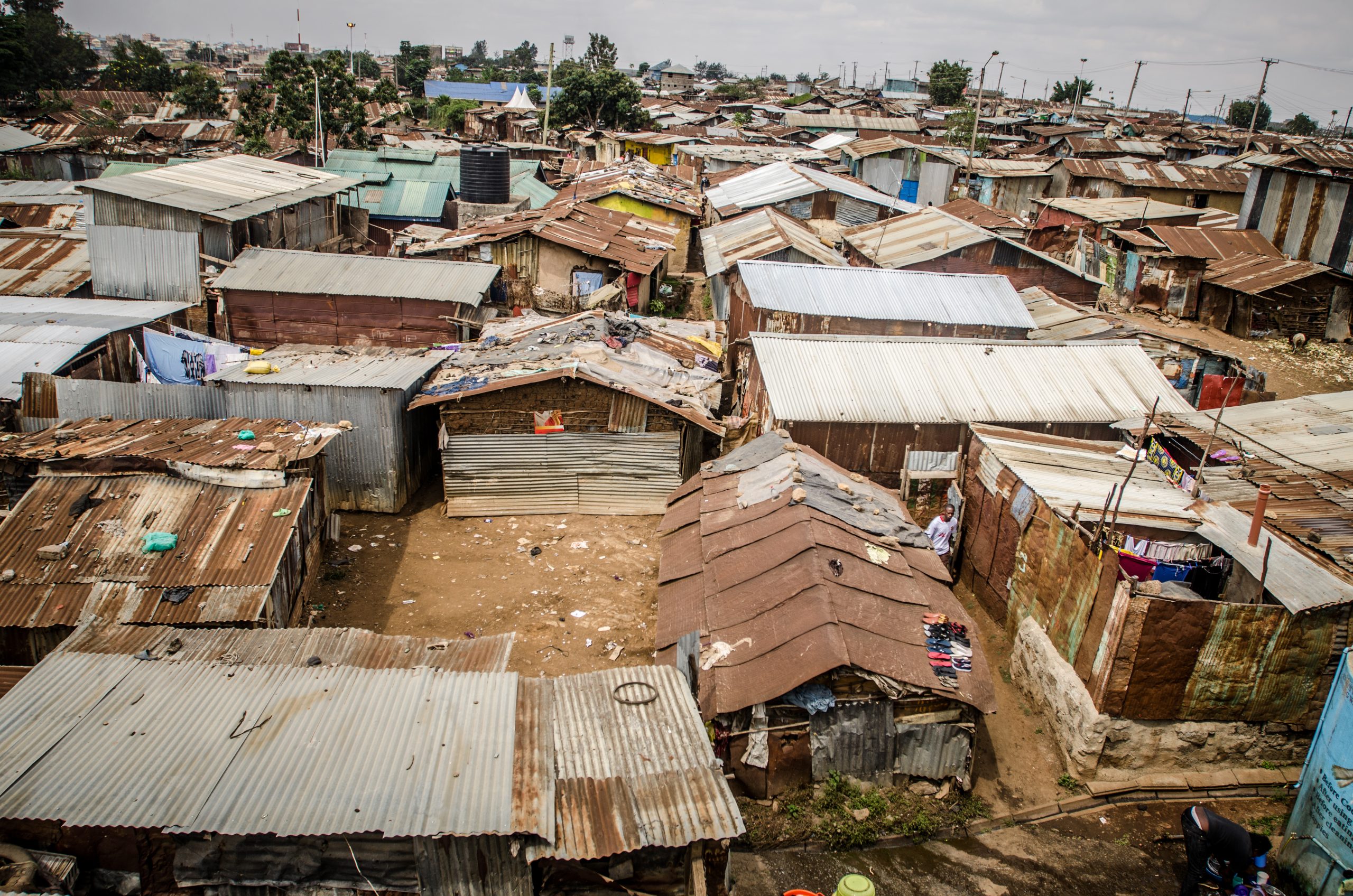 Korogocho slum. Photo credit: African Population and Health Research Center
Korogocho slum. Photo credit: African Population and Health Research Center
Caring Cash
Addressing these questions in the razzmatazz of Korogocho in Kenya is Tom Neumark’s new book, Caring Cash (Neumark, 2023). It details his attempt to understand two free-cash schemes. The setting is Korogocho, a dense sprawling slum where 50% of all residents of Nairobi live. There in Korogocho, where some 25% of all the households received a cash grant equivalent of some US$ 18 per month, the rhythms of life can be quite dire. It records disproportionately high rates of HIV infections, maternal mortality, and child mortality (Neumark, 2023, pp. 38-40). Most residents here are also migrants who come to seek ‘a better life’ (Neumark, 2023, p.53). People are, indeed, ‘needy’; not simply ‘wanting’ (Neumark, 2023, p. 70).
These conditions of needs taking precedence over wants clearly justify the choice of Korogocho as a trial station for free money. This was from either the Urban Food Subsidy Cash Transfer or the Orphans and Vulnerable Children Cash Transfer (Neumark, 2023, pp. 71-80). Respectively funded by a transnational NGO and the World Bank, both schemes have the imprimatur of the Government of Kenya, which has been urged to extend the programme (Neumark, 2023, pp. 5-6). Unlike conditional cash transfers, these grants are not monitored nor tethered to needs. Who must get what, what should this cash be used for, and receipts for which or what purchase are all demands of the past. This about-face in cash grant-making does not imply the abandonment of science. It is, on the contrary, an embrace of scientific standards. Pursuing objectivity, for instance, has been elevated to new heights where involving people with local knowledge creates too much subjectivity. Objectivity requires dispensing, on the one hand, with state intervention and, on the other hand, with local experts. Both are susceptible to subjectivity - the enemy of neoclassical economists (Neumark, 2023, pp. 81-86). At any rate, with technology and mobile money apps, free money can more objectively and more efficiently be transferred into the accounts of recipients (Neumark, 2023, pp. 81-82), the most vulnerable in Korogocho.
The ‘central question’, of course, is ‘what happens when you transfer money directly to poor and vulnerable people?’ (Neumark, 2023, p.17) Do the poor spend the money effectively? Or does free money reproduce problems of inequality?
Welfare Economics and Urban Problems
In 1981, Bruce Walker brought the fields of urban economics and welfare economics together in his book, Welfare Economics and Urban Problems. According to him ‘welfare’ economics differs from economics. While neoclassical economics analyses the impact of money on the economy, welfare economics studies its impact on human well-being. It attempts to measure well-being, or happiness rather than merely economic growth rates. Walker stressed that ‘welfare economics is the study of the way in which the economic processes of production, consumption and exchange affect the well-being of society’. But, as society is made up of individuals, the concern of the economists should be, ultimately, on their welfare. What is sorely lacking, and what anthropological methods can provide, is an appreciation of the human condition.
Caring Cash, published in 2023, testifies to the difficulty the author, Neumark, encounters when studying human conditions and the complex web of social relationships that are affected by free money. Rather than debate the merits of cash transfers over other ways to address poverty, the book looks instead at the effects of cash transfers on people’s lives. ‘When I draw upon the lives and reflections of my interlocutors, including the worm who received cash grants, but also the many others in and outside the slum, including young men hustling in the city, community health workers in the charitable economy, government workers and NGOs in offices, and of course my research assistants, I recognise that only certain aspects of their experience were made available to me, partially and incrementally, over a too-short period of time’ (Neumark, 2023, p.29). As stated by Bruce Walker (1981, pp. 47-48), in welfare economics, individuals are taken to be the ‘best judges of their own welfare.’ So baked in the concept of free money is an expectation that recipients of cash grant will use it wisely. That may or may not be the right assumption.
Free money is not forever. It has a time limit. But cash to the poor is less likely to be hoarded. It will be spent and used well. Above all, the poor show a tendency to invest cash - in relationships, care. Even the so-called ‘ghetto bureaucrats’ of Korogocho, as Neumark characterises local leaders who seek to dictate recipients receiving grants on how they spend their money, mostly claim do so in the ‘interest of the community’.
Debating Free Money Results
The results of giving free money in the slums, however, question the instrumentality of free money theory. Evidence shows that cash transfer does not actually graduate recipients out of poverty. In fact, it encourages them to enroll from one cash transfer programme to another. In Neumark’s study, the money transfers had the effect of welfare in complex ways. But, poverty alleviation, itself, was not the outcome of free cash. The study, therefore, provides no win for free money. ‘This has rested on what might be the only incontrovertible aspect of cash grants: they help to keep people alive’ (Neumark, 2023, p. 181). Analytically, free money helps to think about care in different ways (Neumark, 2023, p.82).
For Dr Neumark, free money ‘is less about what cash grants do than what they represented and what political possibilities they might enable or inhibit’ (Neumark, 2023, p.18). Neumark is ‘more interested…in the care that takes place in non-clinical spaces…because the grants themselves sought, to some extent, to keep people out of the clinical ones, tackling issues of ill health before they escalated’ (Neumark, 2023, p. 21, italics in original). Caring Cash, then, finds no watertight evidence about the potency of free money, even if the evidence shows that free money nuances the nature of recipients’ relationships.
What about the other two free money programmes that make up the Kenya National Safety Net Programme - the Older Persons Cash Transfer Programme (OPCT) and the Persons with Severe Disabilities Cash Transfer? Studies of these are not particularly sanguine, either. Take the OPCT, entailing the monthly payment of US$20 to ‘provide regular and predictable cash transfer to poor and vulnerable older persons (65 years and above) in identified deserving households’. One recent study (Chepngeno-Langat et al., 2023), ‘using propensity score matching…evidences that the OPCT improved subjective financial well-being among beneficiaries’ (Chepngeno-Langat et al., 2023, p.107). ‘Results from the propensity score matching analysis indicated that 50% of beneficiaries felt that they had at least some money to meet basic needs compared to just over 36% of non-beneficiaries’ (Chepngeno-Langat et al., 2023, p.119). This is not the full picture, however. ‘50% of the beneficiaries reported that despite the OPCT stipend, they still do not have sufficient money to meet their basic needs’ (Chepngeno-Langat et al., 2023, p.120). In another study, drawing on interviews with 80 beneficiaries, only about 50% could seek much-needed health care because, as noted by 54% of the beneficiaries, the cash received is insufficient.
South African research by Molly Rosenberg and her colleagues offers some positive results. Not only is the South African social protection programme – covering some 30 million people - credited with being ‘one of the ‘most comprehensive’ in the Global South it has enhanced nutrition and education, increased women’s participation in the labour force, and improved the health of elderly people. When elderly people who take US$16 per month for their health needs are compared with a control group who take no such payments, the recipients of free money clearly do much better on cognitive health.
Even so, South Africa is the most unequal country in the world. Thus, in debating these important findings, it is important to clarify whether results depend on the design of free money programmes - from the implementation of free money, or from methodological approaches in evaluating free money. Does it matter when comparisons are done based on before/after basis, recipient/non -recipient basis, or poverty/non-poverty basis? experimental approaches More fundamentally still, do these results sidestep the fundamental question: how else to address the challenging conditions in urban slums and urban economies in Africa?
Some say that answers can be found in more effective design of free money programmes, that the idea itself seems sound – even with some fetters, and that more free money should be given. These arguments have been made by political economists (Spies-Butcher et al., 2020) and anthropologists (e.g., Graeber and Leng, 2019; Peters, 2023) alike. Both in richer and poorer societies, free money is good. Amit Jain, the Director of the NTU-SBF Centre for African Studies notes, ‘the Economic Survey of India (ESI) estimated that providing a modest basic income to all but the richest quartile of Indians could shrink national poverty from 22 to 0.5 percent, while promoting social justice and empowering the poor’ (Jain, 2023, p.91). A recent study conducted by Nobel Laureate Abhijit Banerjee and a team of economists at the Abdul Latif Jameel Poverty Action Lab concluded that the impact of UBI on poverty, education, health, entrepreneurship and other parameters was ‘very positive’. But it also said that the results ‘varied greatly within and between studies’. The study concluded that UBI is ‘unlikely’ to be cost-effective at achieving any particular narrow policy goal (Banerjee et al., 2019, pp. 1-2).
Critics demur. While some of the results of free money programmes are positive, the totality of the evidence raises some fundamental questions about free money - none of which is backed by the lived experience of beneficiaries. Jimi O Adesina (2020), well-known African social policy specialist, notes that free money is too poverty reduction focused, that free money takes attention away from long-term development planning, and that free money does not take structural transformation of African economies seriously. Social and economic policy analysts like Thandika Mkandawire (2004), leading African Keynesian economist, seem to prefer free money as part of a wider, more comprehensive development policy agenda. He put the case for a ‘developmental’ or ‘transformative’ social policy, which is much more comprehensive than even a Nordic ‘welfare’ policy (see Meagher, 2019, p. 520). The United Nations Research Institute for Social Development, UNRISD, which Mkandawire led for years, also takes this broader view (see UNRISD, 2010).
What if wide-ranging social policy exists alongside free money? As David Graeber strongly advocated, ‘We need free health care, free higher education, and a basic income (Graeber and Leng, 2019, p. 3, italics in original)? In that scenario, we must assume that free money can work and consider Amit Jain’s (2023, p.91) suggestions seriously. One is to build the human capital required to implement such free money in Kenya or anywhere else in Africa. Another is to develop a recurrent programme of collecting evidence on the relationship between free money and economic development. A third is to promote state ownership of free money programmes, but such an intervention requires broad public support. Then, crucially, we ‘must’, in the welfare tradition of prescribing, simultaneously support wider social interventions.
The Promised Land
In Global Migration Beyond Limits: Ecology, Economics, and Political Economy (Obeng-Odoom, 2022), I use the concept of ‘the promised land’ as an analytical tool to diagnose a social problem and provide a political-economic response. It offers a compass for the future of migration. If most migrants from Africa spend most of their time overseas, especially working and saving up to buy land and housing, then land is a central part of the migration process. If, even refugees, remain comfortable or stressed out based on their form of land and housing, then land is pivotal in the development process.
Ngugi Wa Thiong’O, the eminent Kenyan novelist, illustrates the vitality of land in his 1964 novel, Weep Not, Child. There, we learn the history of how Kenyans fought for freedom. Ime Ikiddeh, who provides ‘introduction and notes’ to the story, helpfully sketches the context of its production. Kenyans had lost everything – their lands, their freedom, their dignity, their loved ones – to the British. They had drafted Kenyans to fight in the First and Second World Wars. British seeking a new life after the Wars had been given Kenyan lands to settle, to farm, to use as they pleased. Kenyans worked the land, their land, but received little or nothing in return. On their own land, Kenyans became tenants, landless. Jomo Kenyatta returned from the UK to lead a movement for independence, for the return of Kenyan lands, to restore the basis of all freedom: common land. The British colonisers would give everything, but not the land, not independence, not freedom. And when Kenyatta and his movement insisted on getting back the land, the foundations for freedom, they were unjustly imprisoned. Such conditions gave rise to anti-colonial struggles, notably the Mau Mau resistance (from 1952 to around 1960), what Ime Ikiddeh calls ‘the militant wing of the nationalist movement’ (p.viii) led by Jomo Kenyatta. This condition persisted around Africa. Alan Paton’s novel Cry, The Beloved Country (1948/1991), attempted in fiction when it recounted how the roots of the South African immoral apartheid system was locked in the privatisation of land. The results of Kenya’s ‘land grab’ laws to the country’s underdevelopment at the pleasure and to the benefit of the stranger-colonist. The net effect was to enrich the coloniser, impoverish the colonised, and to weaken the collective spirit of Kenyans by individualsing their common land.
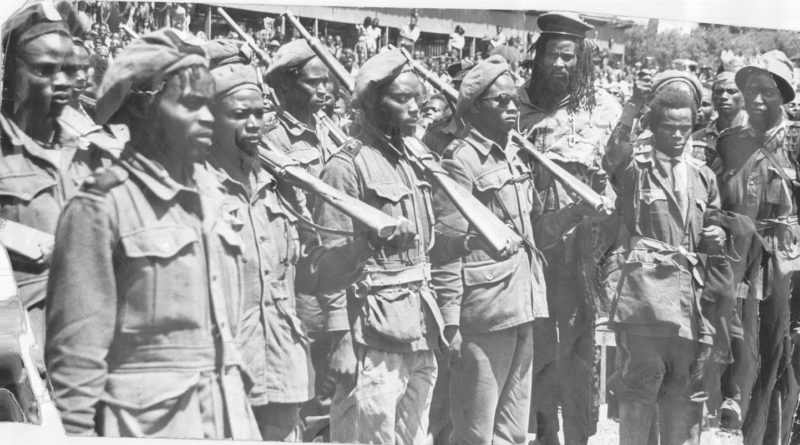 Photo credit: For The Record
Photo credit: For The Record
I suggest, then, that at the root of the problem in Korogocho is land. Historically, the Korogocho slum was built on traditional Kikuyu land that the British bought to house railroad workers (Neumark, 2023, pp. 40-49). But not enough Africans could be found to work in the horrendous conditions that the colonisers had created. Africans already worked the land and lived on the land. In an attempt to break their ties to their land and compel them to work the labour-land ratio was manipulated. The British authorities resorted to the use of Indentured labour from India (Forstater, 2023). In addition, they imposed taxes on African labour. Stratification was created and reproduced through labour management practices. British workers were well cared for, but not the Africans or the Indians. They continued to lived in under-serviced shacks. Discriminatory municipal services provision persisted throughout the colonial period. Korogocho, is a product of this history.
Kenya attained independence in 1963. While racial animus abated with independence, post-colonial governments did not implement the full interventionist policies needed to address past failings. Instead, they focused on developing well-resourced parts of the city, espoused harambee or self-help in the slums as a way of development and appealed to the charities and churches that offered philanthropy during the pre-independence era to continue their practice of giving. The World Bank would later support a minimalist sites-and-services scheme and private landed property-based development, but this did not change the process of long-term decay (Otiso, 2003, p.222). To make matters worse, lack of secure land tenure resulted in recurrent eviction or threat of eviction of those who made a living on it.
Ironically, while the size of the slum has been growing, the socio-economic conditions of its residents is worsening. Urban in-migration from evicted residents in other slums in Nairobi is one reason. So is rural-urban migration. Migrants’ first move to Korogocho was to find ‘somewhere cheap to rent and close to a place where they might find some work’ (Neumark, 2023, p.53). But this supposedly temporary springboard usually turns out to be a permanent chokehold. This phenomenon has been attributed to ‘predatory landlordism’ (Feather and Meme, 2019, pp. 1496-1497) - an overwhelming power of landlords documented elsewhere in Africa (Owusu-Ansah et al., 2018).
It is understandable why neither free markets, free money, nor free movement has addressed the problem. Germane to Jeffrey Sachs’ (2005) opinion advanced in The End of Poverty, a ‘quick-fix’ solution such as cash transfer scheme, which is centred on the Western concept of philanthropy and benevolence can create a paradox of ‘progress and poverty’ (George, 1879) - development for some and deprivation for others, while doing nothing to address the foundations of the problem.
End of Free Money
What is required is fundamental land reforms that can ensure progress without poverty. This evolutionary reform could have a place for ‘radical philanthropy’ (Herro and Obeng-Odoom, 2019): It would address inequalities by redressing rent theft and provide reparations to remove the historical roots of the problem. A Fund is needed. But its set-up must recognise and, indeed, rectify ‘rent theft’. The Fund should be filled with revenue from a single tax: a land value tax, along with flows from reparations payments to address rent theft. Workers should not be taxed. Instead, the revenues from the Single Tax Fund should be used to provide public housing. Much social housing can be built on common land, too. The rest of the funds can be used to finance a comprehensive economic policy. There shall be neither wage theft nor rent theft. With the commoning of land, ecological imperialism with its ecological commodification and ecological crises would abate. The social conditions of labour would not require philanthropic band aids. There should be no slums. At last, there would be progress, prosperity, and sustainability all at once. What, in that scenario, would be the use of free money?
Franklin Obeng-Odoom is currently Professor of Global Development Studies at the University of Helsinki, Finland. He is the Editor of the Handbook on Alternative Global Development (Edward Elgar, 2023), Associate Editor of the Forum for Social Economics, and former Editor-in-Chief of the African Review of Economics and Finance. Professor Obeng-Odoom is a winner of the Kurt Rothschild Award for Economic Research and Journalism. Contact: [email protected]
Without implication, the author gratefully acknowledges the helpful feedback by Amit Jain.
References
Adesina J.O., 2020, ‘Policy Mechandising and Social Assistance in Africa: Don’t Call Dog Monkey for Me’, Development and Change, Volume 51, Issue2, pp. 561-582
Banerjee A, Niehaus P, and Suri T, 2019, ‘Universal Basic Income in the Developing World’, NBER Working Paper, No. 25598, February.
Chepngeno-Langat G, van der Wielen N, Falkingham J, & Evandrou M, 2023, “Targeting Cash Transfers on the ‘Poorest of the Poor’ in the Slums: How Well Did the Kenya’s Older Persons Cash Transfer Programme Perform?”, Journal of Aging & Social Policy, vol. 35, no.1, pp. 107-124
Feather C and Meme C.K. 2019, ‘Strengthening housing finance in emerging markets: the savings and credit cooperative organisation (SACCO) model in Kenya’, Housing Studies, vol. 34, no. 9, pp. 1485-1520,
Forstater, M., 2023, ‘Taxation and European Colonial Accumulation: The Disruption of Economic Livelihoods in Africa’, America, R.F. (ed), Accounting for Colonialism. Palgrave Macmillan, Cham, pp. 339-354.
Friedman M and Friedman R, 1979/1980, Free to Choose: A Personal Statement, Harcourt Brace Jovanovich, New York and London.
George H., 1879. Progress and Poverty, The Fiftieth Anniversary edition. RobertSchalkenbach Foundation, New York.
Graeber D. and Leng L. T. L. (2019). Bullshit jobs: A conversation with david graeber. Made in China Journal, (2) Retrieved from https://www.proquest.com/scholarly-journals/bullshit-jobs-conversation-with-david-graeber/docview/2806186941/se-2
Hanlon J, Barrientos A, and Hulme D, 2010, Just Give Money to the Poor: The Development Revolution from the Global South, Kumarian Press, Boulder and London.
Herro A and Obeng-Odoom F, 2019, ‘Foundations of Radical Philanthropy’, Voluntas, vol. 30, pp. 881 – 890.
Jain A, 2023, Back to Growth: Priority Agenda of the Economic Revival of Nigeria, NTU-SBF Centre for African Studies, Singapore.
Keynes, J.M., 1953/1964, The General Theory of Employment, Interest, and Money, A Harvest Book, Harcourt, Inc., San Diego, New York, and London.
Meagher K, 2019, ‘Reflections of an Engaged Economist: An Interview with Thandika Mkandawire’, Development and Change, vol. 50, no. 2, pp. 511–541.
Mkandawire T, 2004, ‘Social Policy in a Development Context: Introduction’, in Mkandawire T, ed, Social Policy in a Development Context, Palgrave Macmillan, Basingstoke, pp. 1-33.
Neumark T, 2023, Caring Cash: Free Money and the Ethics of Solidarity in Kenya, Pluto Press.
Obeng-Odoom F, 2022, Global Migration Beyond Limits: Ecology, Economics, and Political Economy, Oxford University Press, Oxford.
Otiso K.M., 2003, ‘State, voluntary and private sector partnerships for slum upgrading and basic service delivery in Nairobi City, Kenya’, Cities, vol. 20, no. 4, pp. 221-229.
Owusu-Ansah A, Ohemeng-Mensah D, Talinbe R, and Obeng-Odoom F, 2018, ‘Public choice theory and rental housing: an examination of rental housing contracts in Ghana’, Housing Studies, vol. 33, no. 6, pp. 938–959.
Paton A, 1948/1991, Cry, The Beloved Country, Longman, London.
Peters, R. 2023, ‘The Challenge of Contemporary Welfare: Conditional Cash Transfers in Indonesia’, SAGE Business Cases. United Kingdom: Sage Publications Ltd
Sachs J, 2005, The End of Poverty, Penguin Books, London.
Smithies A, 1948, ‘The Multiplier’, American Economic Review, vol. 38, no. 2, Papers and Proceedings of the Sixtieth Annual Meeting of the AEA, pp. 299 -305.
Spies-Butcher B, Phillips B, Henderson T, 2020, ‘Between universalism and targeting: Exploring policy pathways for an Australian Basic Income’, The Economic and Labour Relations Review, vol. 31,no. 4, pp. 502-523.
The Economist, 2020, ‘Free Money: When Government Spending knows no limits’, The Economist, July 2th5 – 31st, p.7
United Nations Research Institute for Social Development, UNRISD, 2010, Combating Poverty and Inequality: Structural Change, Social Policy, and Politics, UNRISD, Geneva.
Wa Thiong’O, N, 1964, Weep Not, Child, Heinemann, London.
Walker B, 1981, Welfare Economics and Urban Problems, Hutchinson and Co Publishers Ltd, London.
Wray L.R., 2022, ‘Foundations of modern money theory’, in Stilwell F, Primrose D, and Thornton T.B., eds., Handbook of Alternative Theories of Political Economy, Edward Elgar Publishing, Chaltenham, pp. 216-230.


.tmb-listing.jpg?Culture=en&sfvrsn=8636ce67_1)

